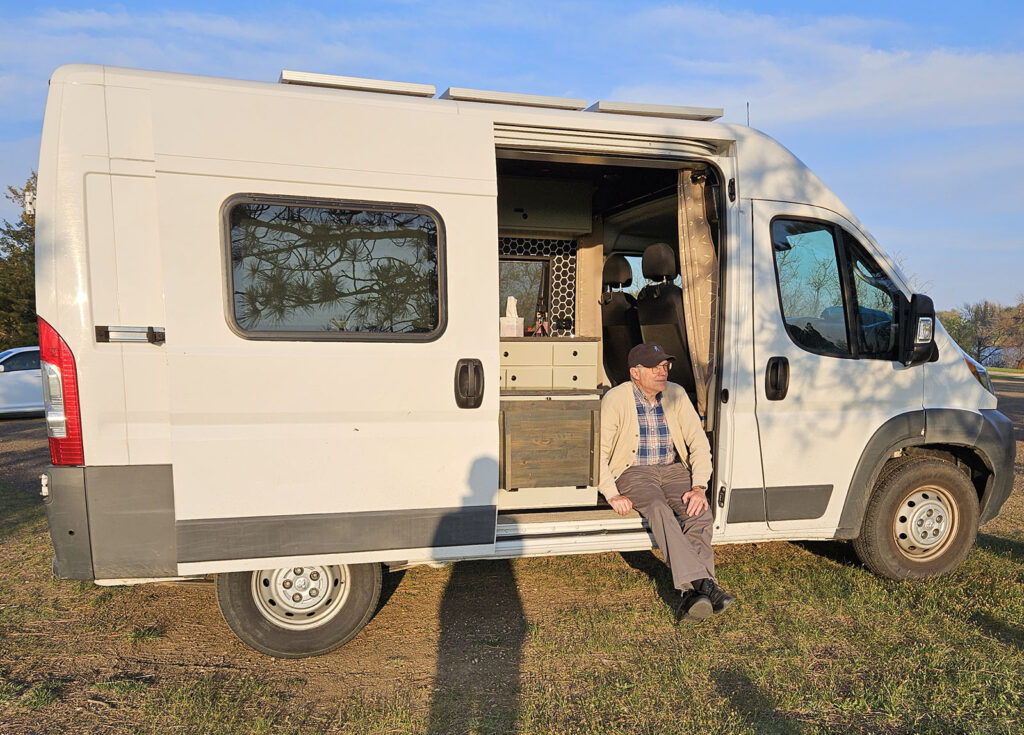Today I’ve been thinking about what makes science fiction, science fiction (spurred by my recent publication of a ghost story-science fiction crossover, “A Visit from Old Earth”, in S’more Spooky Stories, published by Owl Hollow Press). Thinking about science fiction makes me think about trilobites (of course), long abandoned barge canals, and my campervan.
Let me explain!
Everyone has their favorite definition of SF (I certainly have mine—you can read some of my thoughts at Distinguishing Science Fiction and Fantasy and Putting Science Back in Science Fiction). However, sadly, in recent years, science fiction has come to mean techno fiction. Soft science fiction becomes stories about how societies respond to changing technologies while hard science fiction focuses on the technologies themselves. Whoa! Where is the science? Although science provides a foundation for technologies, science is not at all the same thing as technology. Science is about exploration, discovery, figuring things out. It’s about solving puzzles of the natural world.
That’s the kind of science fiction I want to write (and read). To stir my creative writing inclinations in that direction, I need to engage with exploration, discovery, and figuring things out while on my campervan travels! That means trilobites and abandoned canals!
____________
THe Trilobite Trail
With a bit of online searching, Mary and I found that the Elgin member of the Maquoketa Formation (a particular Ordovician rock layer of Iowa) held an abundance of trilobite fossils that might be good for collecting. Finding outcrops of the rock (places where it is exposed at the surface and not covered up by farm fields) proved harder. Multiple sources that we found said outcrops occurred in eastern Iowa, near Clermont and Fort Atkinson, but that’s a lot of territory to search randomly, and we couldn’t just go traipsing across private land looking for outcrops. We needed more specific guidance.
Unfortunately, the sources we found that provided detailed location information were often PhD dissertations from the early 1900s! We got directions like “cutbanks along the river north and south of the main bridge going east out of Fort Atkinsons” and “high stream bank near the road east of Clermont…”
We found the main bridge east of Fort Atkinson, but alas, we found no outcrops there. It occurred to us, after some reflection, that a lot might have changed since the early 1900s. We downloaded a map of the town and studied it, noticing that one of the main east-west streets ended abruptly at the river. Might it be possible that, in the early 1900s, that street continued on across the river and became the main road going out of town? We navigated our way to that street, following it east until we encountered the river. The road did, indeed, end abruptly at the river, the bridge long gone, but the mortar-and-rock-abutments of a former bridge still stood on either side. Sure enough, tall cutbanks of rock rich in trilobites and cephalopods (extinct relatives of the squid and chambered nautilus) stretched both north and south. We spent hours there, scouring the rocks for fossils! One of our fossils, the siphuncle of a cephalopod (a part of the cephalopod body used to assist buoyancy while swimming) is shown in the picture.

At Clermont, we drove east along the road, thinking that maybe “high stream bank near the road” meant where a stream crossed the road. We crossed a small bridge and saw what looked like a tiny creek with a cutbank above it. Quite inaccessible from the bridge, however. We parked a ways farther east and crowded our way back through towering weeds and brambles, unable to see where we were going but using sun angle and landscape to guide us toward the stream (if only we’d brought our machetes!) We found the stream, nestled under a twenty-foot-tall cutbank, without getting (completely) lost, or tumbling down any rocky slopes. Here is a picture of our lovely spot.

Our exploration wasn’t quite done yet. Trilobites didn’t occur just anywhere. We had to find the very specific rock layers where the trilobites got buried and preserved. It took us a few hours (good thing we brought our snacks and water!). One of our prizes included a trilobite hypostome (part of the feeding structure of the Isotelus trilobite), shown in the picture!

The moral to the story? Make travel, like your science fiction writing, about adventures, exploration, and solving problems! You can’t write authentic discovery fiction if you don’t do some of your own discovering!
Maybe another time I’ll tell the story of the old, abandoned barge canal, lost in the woods of Ohio. More discovery, mystery, and lost civilizations while traveling in our campervan!
